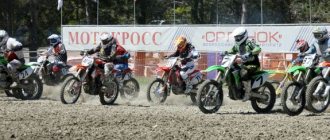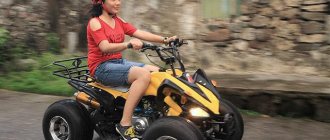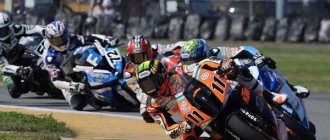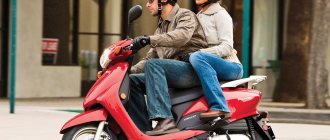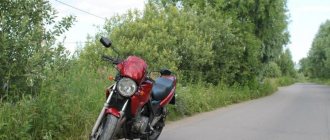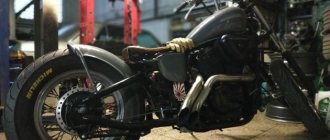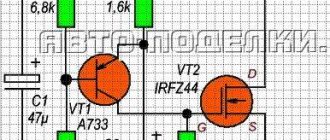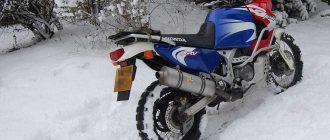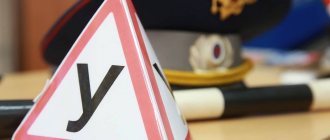Anyone who has ever been to a motocross competition has seen how spectacularly the motorcyclists on their “iron dragons” take corners. Admiring spectators often wonder: is the rider driving the motorcycle or is the motorcycle carrying the rider? In this sport, success equally depends on the skill of the driver, his skills, experience, and the technical characteristics of the vehicle. Only by merging with the motorcycle can an athlete control it, and not everyone can do this. Repeated training develops motor reflexes, which are gradually brought to automaticity.
What is motocross?
First of all, motocross is an exciting sport discipline in which participants compete on special motorcycles. At a distance from public places, a circular route with obstacles in the form of holes, bumps, and turns is selected or specially organized. Driving on such off-road terrain cannot be compared to driving on city asphalt. Various elements (jumps, braking, turns) require muscle coordination, body balance, strength and endurance.
Motocross is not just riding, it is a sport where the task is set and accomplished - to overcome a special section of the track in the shortest possible time. It's dirty, demanding, difficult work, a mixture of excitement, adrenaline and the smell of gasoline.
At what age should a child start motocross?
Officially in Russia, motocross is available for children from 5 years old. At this age, young athletes become familiar with the rules of the sport, learn safety techniques, learn mindfulness, and work to improve physical strength. Interestingly, in countries such as Spain and Italy there are motocross sections for children from 3 years old, and many world champions began training at this young age.
In our country, children most often start motocross at the age of 10. Many people switch to this sport from children's karting, but there are also those who first get acquainted with motorsports in adolescence. One of the advantages of motocross is the absence of age restrictions, because at the amateur level you can start practicing at any age.
Motocross Competition Rules
All actions of the organizers and participants must be subject to the Rules and strictly followed.
Requirements for motorcycles
Before each competition, the organizers send participants the Regulations on the event, which specifies the requirements for motorcycle classes:
- category I, group A1: 50-500 cm3 for two-stroke engines, 175-650 cm3 for four-stroke engines;
- category I, group B1, motorized strollers: 2-t – 350-750 cm3, 4-t – working volume up to 1000 cubic meters.
You can compete in several classes. At cups, championships, championships of the Russian Federation, competition in motorized wheelchairs is held only after the performance of singles. Winter racing must be carried out on metal-studded tires. Only one type of tire is used in one race.
Route requirements
The motorcycle racing track is a circular section 1.5-3 km long. It does not bifurcate anywhere; it can be stationary (permanent) or temporary. Official competitions take place on tracks of 1.75 – 2 km. The narrowest point of the route is 6 m, for motorized wheelchairs - no less than 7 m. In the vertical space along the route, nothing should be at a height of less than 3 m. The safety of drivers directly depends on the configuration of the jumps. Multiple jumps are not allowed. After the turns, “ridges” are arranged - mounds half a meter high, the distance between the peaks of which is about 2.5 m. The rules prohibit dangerous routes - with rocky areas, deep reservoirs. Also, there should not be long sections of the journey where you can accelerate to speeds above 55 km/h.
Safety requirements
The organizers are obliged to ensure the safety of all competition participants. The track should be watered before and between runs to reduce dust. There should be no service dogs in the area where racing participants are located.
The entire length of the route must comply with the following rules:
- poles, trees, and other obstacles that cannot be removed are fenced with bales of straw or other material that absorbs impact force;
- a meter-long neutral zone is provided along the entire length; Ideally, this is an embankment 50 cm high with thin wooden pegs driven in, connected together with tape.
The work area (park, start/finish area) must be fenced, and unauthorized persons are prohibited from entering it.
Requirements for the starting area
Starting motorcyclists line up at a distance of a meter from each other. Singles start in groups of 30 people, respectively, the width of the starting zone is at least 30-32 m. If official competitions are held, then 40 people start at the same time. Wheelchair riders are allowed to start in two rows. The starting area is located at right angles to the first turn. Thus, all participants in the race are on equal terms.
Starting car
For a simultaneous start, a starting machine is used. It is controlled from a closed building by a starter manually or remotely. Starters with individual sections that fall down or backward are allowed. This device is installed on a concrete platform 60 cm wide, has a height of 50 cm and an inclination angle of 80⁰. There is 3 m between the barrier and the waiting area, and for motorcycles with a sidecar – 6 m of free space.
What is a racer park and what is it intended for?
A level area intended for the needs of riders must have:
- indoor area for vehicle inspection by a technical commission;
- closed area for parking motorcycles after the race;
- a separately equipped motorcycle wash with normal water flow;
- women's (4) and men's (6) toilets;
- showers (8);
- first aid station;
- fire protection post.
There should also be two training lanes for testing motorcycles, separated by bales or other non-rigid barrier materials. The racers' park must have direct access to the pre-start area. A jury meeting room is located on or near the park.
Other buildings and premises
Around the route there are service points involved in the competition.
- The bureau is right at the entrance to the highway. There are also places for the press. The room is equipped with furniture, telephone, copying equipment, and fax.
- Medical support is specified in the Regulations. There should be 3 ambulances, one of them with resuscitation equipment. The head doctor of the competition and his team are responsible for medical care.
- Fire stations must be located at designated places on the route, as well as in the park, at the start, and in the repair area.
- Commentators broadcast from their posts via loudspeaker.
- There must be a tower to count laps and record time.
- Near the finish line there is a clock showing the race time.
- There must be signal posts for judges along the entire course.
In addition to service buildings, the organizers will equip facilities and premises for racing fans who came to cheer:
- parking lots;
- first aid station;
- food points;
- toilets;
- fire brigade post.
There should be a garbage collection point near each named object.
Pre-competition training
Registered participants, after medical and technical control, have the right to train. When and how long they will last, on what principle the selection will be made - participants will learn about this from the Regulations of the competition.
Free training lasts half an hour, and for a while - 20 minutes. If there are more than 4 dozen riders, they are divided into groups. In official training, you are given 5 minutes to try out the start (directly on the day of the race or qualifying heats). If there are changes in the path configuration, 1 lap is given to familiarize yourself with the changes. In each official race, 40 bikers are allowed to start at the same time.
Race program
The competition regulations, approved by the organizers, establish the program:
| Number of runs | Check-in time, min | Additional circles | |
| Multi-stage official competitions | |||
| Singles | 2 | 30-40 | 2 |
| With stroller | 2 | 25-30 | 2 |
| Juniors | 2 | 20-25 | 2 |
| Boys | 2 | 10-15 | 2 |
| Boys | 2 | 5-10 | 2 |
In single-stage competitions there are 3 heats. Break – at least 1 hour 15 minutes.
Starting order
A good dash is a chance to be the first to see the checkered flag at the finish line, so it is very important to start the movement correctly. Before the start, the racers are in the pre-start park:
| Time to start, min | Actions of participants |
| 20 | Opening of the waiting area (WA) |
| 10 | All motorcycles must be in ZO. Those who did not make it in time will be removed from the race and will be replaced by a spare participant. |
| 5, whistle | The rider, mechanic and official remain in the CA |
| 3 | The driver goes to the start, the accompanying persons remain in the area |
| 15 s Raising the green flag with the starter | Closing the ZO. A participant whose motorcycle has malfunctioned can go to the start after his opponents start moving. Racers take place at the start, engines running |
| 5 s | Within 5-10 s the starting machine will work |
They go to the start based on the results of qualifying timed races. The motorcyclist with the best result goes first. Next is a participant from another group, the driver from the first group leaves third. So, alternating groups according to the driver ratings in them, new groups are formed.
If unofficial competitions are held, a draw is carried out, and subsequent races are formed based on the results of the current one.
Having taken a place at the start, the participant can no longer change it, return to the area, or ask for help. Breakdowns that occur at the start must be resolved after the starters leave the area.
False start
Starting ahead of time requires certain actions by the judges.
- The waving of the red flag indicates the return of the competitors to the waiting area and a restart. However, no replacement of equipment or participants is expected.
- The second option is “temporary stop” (TS). The judge's signal at the finish line (he shows the aircraft sign and the rider's number) is an instruction to the athlete to drive to the place marked "AC" for 10 seconds, without turning off the engine, and then continue the cross-country. A special judge oversees the “temporary stop” procedure. A driver who fails to comply with the judge’s instructions three times will leave the race and 30 seconds will be deducted from his result.
If several drivers made a false start, they are also sent to the BC zone: first the strongest of them, then, after completing the circle, the rest in order.
Officials
At official competitions, the jury includes the President, sports commissioner, and chief judge. All of them must be licensed by the Russian Motorcycle Federation. At small competitions, control over the course of the competition falls on the chief judge.
Everything related to the organization of competitions is the responsibility of the organizers. These issues do not concern the jury, which is responsible only for the course of racing, judging, arbitration, and appeals. Arriving one day before the start of the event, the jury, together with the race director, inspects the track and facilities for compliance with the program and safety. When the jury meets, team representatives have the right to be present as observers.
Check-in stop
Raising the red flag means stopping the race (training). The decision to stop can be made by the Chief Judge based on a situation that threatens the safety of any participant in the competition. If the riders have not driven half the allotted time, after 30 minutes a restart will be given, from which the drivers responsible for the stop may be excluded and replaced with spare ones. At this time, you can change your motorcycle, but no later than 10 minutes before the start. If motorcyclists have completed more than half of the race time, they are judged by the time they showed on the previous lap before the wave of the red banner.
The race can only be stopped once. If a second stop is required and the riders have not completed half the time, the race is considered to have failed.
Rider behavior. Help him on the track
A biker is a person responsible not only for his own safety, but also for those around him. For this reason, the rider must strictly adhere to the rules of movement and behavior on the track.
- It is prohibited to cut the route - this will be considered as gaining an advantage.
- When going to a park or repair area, you need to choose a trajectory that does not interfere with the movement of other participants. You should move slowly in these areas.
- Team members and their representatives can consult only in the repair and park areas.
- The rider cannot accept any outside help on the track, except from the judges and following safety rules: lifting a fallen motorcycle, moving it to a safe place, supporting it during repairs. At the same time, the racer is obliged to repair his iron friend independently.
- You can drive freely into the repair area and stop to replace any part except the frame. You can refuel with the engine not running. If the main or qualifying races take place, this motorcyclist no longer goes on the track.
To keep up to date with all information regarding motocross, riders must attend all meetings held for them by the organizers.
Defining Results
Races around the ring continue until the leader, who has completed all the laps, races along the finish line, and the judge waves the flag at the moment of crossing. Everyone finishes in order, and the number of laps completed is also taken into account. The results of motorcyclists who:
- after 2 minutes the winner did not show up at the finish line (more than a kilometer on the track - 3 minutes);
- did not complete 75% of the laps completed by the winner.
If, when recording the results, the result is not a whole number, it is rounded towards a larger value. It happens that the judge is a fraction of a second late in waving the finishing flag, and the result does not coincide with the official time. In this case, places are allocated in the order of the race at the time the black and white flag waves.
If riders participated in several races, their points are added up, and the winner is determined based on the sum of points. If there is a tie between two competitors, the one who took more prizes is chosen. If in this case the leader is not identified, the final result will be determined by the points of the last race.
Motorcycles
The duty of the motorcyclist is to provide a motorcycle for technical inspection that meets a number of the requirements listed below.
- Must be equipped with a device for starting the engine.
- The drive chain sprocket must be covered with a shield.
- Reinforcing motorcycle parts (except bolts and nuts) with titanium is unacceptable.
- In the 125 cc class there must be only single-cylinder motorcycles.
- The exhaust should exit from pipes that are horizontal to the axle, have rounded edges and do not protrude beyond the rear tire. Drivers must take measures to ensure that oil does not leak onto the track. In addition, you should adhere to noise standards (at a distance of 5 m from the motorcycle, the noise level should not exceed 90 decibels).
- The angle of the exhaust pipe for wheelchair users can be no more than 30⁰.
- The steering wheel must be made of solid material; welding is not allowed. The width of the steering wheel is from 60 to 85 cm, the crossbar should be covered with soft material, and the handles with rubber. Racers wear unbreakable guards on their hands.
- The control levers are mounted on individual hinges and must operate in any position wherever they are installed. To prevent slipping of hands and safety, all levers are one whole mechanism, which ends with a round ball (d14-19 mm).
- The primary ignition circuit must be interrupted by the throttle valve. If the rider releases the control stick, the flap should fall down on its own. The installation location of the breaker is at the rider's discretion, the main thing is that it is within the closest reach. The breaker uses a non-flexible cord that can be coiled.
- The footrests must be designed according to the automatic return principle.
- Each wheel must have an independent brake.
- Shields made of flexible material should cover the wheel on both sides.
- To enhance the endurance of the wheel, racers use cast or forged spokes that are covered with discs.
- The rim of a wheel cannot be replaced. Tires should not have scoop-shaped treads or chains. Studded tires are used, if specified in the Regulations, mainly in winter.
- Motorcycles with sidecars can only be rear-wheel drive. The tracks from the front and rear wheels should have a difference of no more than 7.5 cm. The distance from the track of the rear wheel to the track of the stroller is 80-115 cm. When installing the stroller, do not use hinges. If the stroller is one piece with the frame, then it must be immovably attached to the frame and not move. The width of the motorcycle with a sidecar is 1 m 75 cm.
- The weight of motor vehicles is from 65 to 105 kg; the weight of wheelchair users is not regulated.
- Motorcyclists use flexible license plates measuring 23.5-28.5 cm, or paint them on the vehicle. A total of 3 number indicators are needed: 1 on the front, 2 on the sides.
- The numbers should be easy to read, have a size of 14 * 8 * 2.5 cm with a distance between them of 1.5 cm. Motorcycles of each class are equipped with license plates of a certain color, applied to the background of the range provided for by the Rules:
| Class, cm3 | Background | Number | Class, cm3 | Background | Number |
| 125 | Black | White | 50, 60, 85 | White | Black |
| 175 | Red | 750/with stroller | Yellow | ||
| 250 | green | ||||
| 350 | Blue | ||||
| 500 with stroller, 650/with stroller | Black | ||||
| 1000-1300 | Red | ||||
License plates must be on the motorcycle only during competition, but also during training.
Refueling the motorcycle while the engine is running is strictly prohibited, otherwise the rider will be disqualified from the competition. You can use 102 (90) grade unleaded gasoline. Nothing other than oil can be added to the fuel. 2nd motorcycles are fueled with a mixture of gasoline and oil with an octane number no higher than it was before mixing.
Equipment
Athletes must wear special equipment during training and competition to protect them from the costs of fast driving.
- The helmet must be intact, without damage, and secured with a strap under the chin. The fastener should be easy to remove if necessary. After each emergency, as well as before training races, technical control checks the riders' helmets. If the protective headgear is found to be defective, the technical judge will require it to be replaced with a new one. Otherwise, the athlete will not be allowed to race.
- Racers' suits and gloves must be made of materials that are resistant to abrasion, water permeability, fire, refractory and non-toxic.
- Leather motorcycle boots are used as footwear.
- On the top of the suit during racing/training, the rider must have a number measuring 25*20*3 cm, made in a color contrasting with the shirt.
All areas of the athlete's body must be covered. To do this you will need motorcycle goggles, knee pads, belts, and neck protection.
Major motocross competitions
The most prestigious competition is the World Motocross Championship. Before this, from 1952 to 1957, only representatives from Europe competed. With the growing popularity of motorcycle cross, the geography of racing participants has expanded, who now compete in two classes: MXGP, MX2. Over the course of 30 minutes, athletes cover the track plus 2 additional laps.
Since 1947, motorcycle teams have competed annually in an event called Motocross des Nations. In 1961, the Trophy of Nations was added to the Motocross of Nations races, and in 1980 the Nations Cup was added. Now these three separate events have been combined into one.
In America, since the early 70s, the main series of AMA Motocross Championship races, organized by the American Motorcycle Association, has been held.
Taiwan's largest tire manufacturer Maxxis supports the British Motocross Championship.
Since 2005, the fair half has been competing in the Women's Motocross Championship.
Federation
All official motorcycle competitions are organized by FIM - International Federation . From 1904 to 1949 it was called the International Federation of Motorcycle Clubs. Nowadays the FIM has more than 115 national member federations. They are divided into 6 groups by region.
In Russia, the sports discipline “motorcycle cross” is developed by the Motorcycling Federation (MFR) . It was founded in 1960 and is the successor to the Motorsports Federation of the Soviet Union. The MFR includes 65 regional federations.
Historical background on motorcycle racing
Fans of racing motorcycles have always strived to identify the strongest. The spirit of competition was present among the owners of the very first motorcycles. The famous “fox race”, which took place in 1908 on the outskirts of London, showed the inadequacy of iron machines in comparison with horse riders. On off-road, only two racers reached the finish line, but the idea was to show strength, maneuverability, and the advantage of technology.
In subsequent years, various competitions were held, which did not arouse mass interest. The organizers were still searching for the right racing format. For example, we tried the Hill Climb race. The racers started one at a time, and the route was chosen in such a way that none of the participants managed to climb the hill. The winner was the one who covered the most kilometers.
Multi-day marathon cross-country races on straight public trails were also practiced. And only in the 20-30s was the optimal option for competitions found. They turned out to be circuit races, which suited everyone - organizers, racers, spectators. Natural covering was used: soil, grass, sand. The organizers used a mass start for the first time and resolved the issue with the length of the track: for convenience, a circular configuration of 1.5-3 km was chosen, which fully allowed fans to enjoy the exciting spectacle.
The first competitions were held on ordinary road motorcycles, lightened by removing mirrors, headlights, and trunk. But the design idea worked towards creating a special cross bike that would meet the requirements: speed, lightness. In 1947, the first international championship was held, which marked the beginning of annual competitions, each time in a different country. Racing became popular, and the International Motorcycle Federation approved the European Championship.
The 80s are called the “golden era” of the rapid development of motocross. At that time, the technical parameters of motorcycles regularly changed, new stars of motorsports were identified, and the best manufacturers of motocross motorcycles were determined. In 2008, women took part in the world championship for the first time.
Motocross for boys and girls
Motocross, like other types of auto-moto sports, is considered a male hobby. But despite this, today you can often find girls in sections. Most often, girls come to this sport following the example of their father or following their older brother.
The coaches note that the girls who come to the sections have a truly masculine character. They have no fear of speed, they are resilient and persistent and are in no way inferior to the guys. But most often, after several years of training, girls still leave motocross, because other tasks come first, such as studying, starting a family and career.
Educational literature
Beginning motorcyclists will be interested in mastering motocross, studying the discipline, including from books, which have become desktop textbooks for many modern leaders.
- Bales D, Semiks G. “Professional techniques for driving a motocross and enduro motorcycle . Racer strategy, body position, ways to deal with obstacles and many other valuable tips - all this useful information is in this manual.
- The book by Yu. I. Trofimets “Motocross. Training of Racers” , published in 1990. It’s almost impossible to get a “live” paper edition, so fans actively download it on the Internet. Each chapter of the book is based on the practice of an honored trainer and is distinguished by a scientific approach. There are no analogues of this publication in the whole world.
- How to prepare for the race, how to prepare yourself psychologically? How to rationally process the track, what tactical methods of fighting to apply in the race? These questions will be answered in the book by I. M. Grigoriev “Motocross and the Racer” . Master of sports, world championship medalist and, by the way, student of Trofimets Igor Grigoriev gives practical advice on behavior on the track. The edition is old, 1983, but in demand by motocross fans.
- The book for the beginning motorcyclist, “Motorcycles for the Beginner,” will be useful for those who dream of switching from a bicycle to motorized equipment. The choice of equipment, driving rules, characteristics - answers to these and other important questions are given in the publication of the Motorcycle Safety Foundation. All that remains is to purchase the “iron horse”.
- You can build your training competently and purposefully with the book of the French Motorsports Federation “Textbook for Motocross and Enduro” . It is intended for trainers and independent training by beginners. Contains a lot of useful information to improve your riding technique.
Extreme motocross attracts with its spectacle, excitement and indescribable spirit of competition. After all, the motorcycle has maneuverability, thanks to which you can overcome obstacles and bypass your opponent. Where a racing car won't go, a motorcycle will get out with ease. But the “iron horse” itself means nothing without a skillful, experienced rider who daily puts his determination, strength, and endurance on the altar of development of the most technically complex sport.
What you need to start classes - security organization
Considering that motocross is one of the injury-dangerous sports, before starting classes it is necessary to pay special attention to organizing safety. First of all, the child must understand that safety comes first, and it is much more important than winning competitions, the admiration of peers, or a sense of personal greatness. These simple truths, of course, will be taught at a motocross school, but parents should also convey to their child the importance of following the rules. Insurance for the child is also important; the policy must indicate that this insurance is specifically for motocross activities, and the insured amount must be at least 100,000 rubles. You will also need medical clearance, which can be obtained from your local doctor if there are no contraindications, and the consent of both parents to enroll the child in the section. When all the documents have been collected, you can begin choosing equipment.
